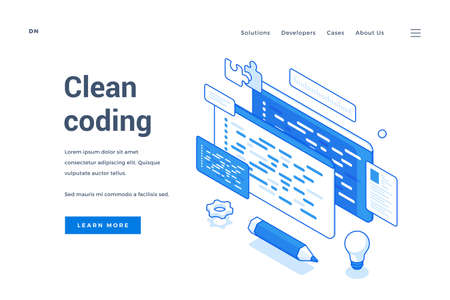Understanding Group Dynamics in American Interviews
In the U.S., panel and group interviews are a common part of the hiring process, especially for roles that require collaboration, communication, or cross-functional teamwork. These interviews can feel overwhelming because you’re not just speaking to one person—you may be addressing three, five, or even more interviewers at once. Understanding how these group dynamics work is essential to making a positive impression and reading the room effectively.
Typical Structures of Panel and Group Interviews
Panel interviews usually involve several interviewers from different departments or levels of the organization. Each panelist may have their own focus—one might ask about your technical skills, while another evaluates your cultural fit. In group interviews, you may also find yourself with other candidates, and your ability to interact with both peers and interviewers is under observation.
| Interview Type | Who’s Present | Main Focus |
|---|---|---|
| Panel Interview | Multiple interviewers, one candidate | Depth in varied skill areas, team fit |
| Group Interview | Multiple interviewers, multiple candidates | Collaboration, leadership, social skills |
Expectations in U.S. Panel and Group Interviews
- Balanced Eye Contact: Make sure to engage each panel member with eye contact as you answer questions, showing respect and inclusion.
- Active Listening: Nod, smile when appropriate, and react naturally to demonstrate attentiveness—not just to the person speaking but to everyone in the room.
- Cultural Awareness: Understand that American workplaces value open communication but also appreciate professionalism and personal boundaries.
- Turn-Taking: If it’s a group interview with other candidates, allow others to speak and avoid interrupting; this shows teamwork and respect for diverse perspectives.
Diverse Professional Backgrounds & Workplace Social Cues
The United States is known for its diversity in professional backgrounds. In any panel, you might meet someone from HR, a technical manager, and maybe even a future colleague. Their expectations and communication styles may differ:
| Role on Panel | Possible Focus Area | Preferred Communication Style |
|---|---|---|
| HR Representative | Cultural fit, company values | Sincere, open, friendly but respectful |
| Technical Lead | Skills, problem-solving ability | Crisp, clear explanations; logical thinking |
| Future Teammate or Peer | Teamwork, daily interaction style | Collaborative tone; approachable demeanor |
The way social cues are interpreted can also vary across industries and companies. For example, startups might encourage more casual body language (like relaxed posture or enthusiastic gestures), while traditional firms may prefer a more formal approach. Observing how your interviewers behave—and subtly mirroring their energy—can help you blend into the group dynamic naturally.
2. Making a Strong First Impression
Why First Impressions Matter in Panel and Group Interviews
When you walk into a panel or group interview, the way you present yourself in those first few moments can set the tone for the entire meeting. In American work culture, body language is just as important as what you say. Showing confidence, approachability, and professionalism through your nonverbal cues helps build trust and makes interviewers more likely to remember you for the right reasons.
Key Body Language Signals to Master
| Body Language Signal | What It Conveys | How to Do It Right |
|---|---|---|
| Eye Contact | Confidence & Respect | Make brief but meaningful eye contact with each panelist when you enter and during introductions. Avoid staring or looking down. |
| Posture | Professionalism & Energy | Stand tall with shoulders back. Walk in with purpose. Sit upright without slouching once seated. |
| Smile | Approachability & Warmth | A natural, friendly smile as you greet the panel helps break the ice and shows you’re open to conversation. |
| Handshake (if offered) | Confidence & Politeness | If handshakes are appropriate, offer a firm (but not overpowering) handshake to each interviewer, maintaining eye contact and smiling. |
| Introductions | Respect & Engagement | Clearly state your name, make eye contact, and thank them for the opportunity. Briefly acknowledge each person if possible. |
The American Context: What Interviewers Expect
In the U.S., interviewers expect candidates to show initiative by greeting everyone in the room, making balanced eye contact, and demonstrating positive energy from the start. Even small gestures—like nodding when someone introduces themselves or using open hand movements—can reinforce your interest and engagement. Remember, it’s not just about looking confident; it’s about showing that you’re approachable and ready to contribute to a team environment.

3. Engaging the Entire Panel
Why Balanced Engagement Matters
In a panel or group interview, its easy to focus your attention on the person asking questions. However, showing equal engagement with all interviewers is key to making a strong impression. When you involve everyone, you demonstrate professionalism, confidence, and respect for the whole team.
How to Distribute Your Attention
Balancing your attention can feel tricky, but it’s manageable with some practical strategies. Here’s how you can make sure every panel member feels included:
| Tip | How to Apply It |
|---|---|
| Rotate Eye Contact | After responding to a question, look briefly at each panelist before moving on. This shows you value everyone’s presence. |
| Address Panelists by Name | When possible, use their names when answering or following up. It personalizes your interaction. |
| Open Body Posture | Sit upright with shoulders relaxed and hands visible. Angle your body slightly toward whoever is speaking but remain open to the rest of the group. |
Active Listening Across the Room
Active listening means more than just hearing words—it’s about showing genuine interest in everyone’s input. Nod occasionally, smile when appropriate, and react naturally to comments from all panelists. This kind of attentive energy is contagious and will help build rapport with the entire group.
Subtle Gestures That Include Everyone
- Mirroring: Subtly mirror the positive body language of different panelists—if someone leans forward in interest, do the same.
- Acknowledging Non-Verbal Cues: If you notice a panelist nodding or taking notes, briefly make eye contact and smile to acknowledge their involvement.
- Inclusive Gestures: When explaining something, use open hand gestures that face the group rather than pointing or focusing on just one person.
Quick Reference Table: Do’s and Don’ts for Group Engagement
| Do | Don’t |
|---|---|
| Make regular eye contact with all interviewers | Stare at one person throughout the interview |
| Use open gestures that include everyone | Cross your arms or turn away from parts of the panel |
| React positively to non-verbal cues from multiple panelists | Ignore reactions from anyone not directly asking questions |
4. Reading Nonverbal Cues
Understanding U.S. Body Language in Group Interviews
In panel and group interviews, your ability to “read the room” goes beyond listening to words. U.S. interviewers and group members often use nonverbal cues—body language, facial expressions, and gestures—to communicate interest, agreement, or even discomfort. Understanding these signals can help you adjust your own behavior and respond more effectively.
Common Nonverbal Cues in U.S. Interviews
| Cue | What It Means | How to Respond |
|---|---|---|
| Eye Contact | Shows attentiveness, confidence, and engagement; lack of eye contact may signal disinterest or discomfort. | Maintain steady (but not staring) eye contact with each speaker; shift your gaze naturally as different people speak. |
| Nodding | Signals agreement or encouragement to continue speaking. | Nod occasionally when someone is talking to show you are listening and understanding. |
| Leaning In | Indicates interest and active participation. | Sit up straight and lean slightly forward when engaged in conversation; avoid slouching or leaning back too far. |
| Crossed Arms | May suggest defensiveness or discomfort. | Keep your arms relaxed at your sides or lightly on the table to appear open and approachable. |
| Smiling | Shows friendliness and openness; a lack of expression can seem distant. | Smile genuinely during introductions and when appropriate throughout the conversation. |
| Glancing at Watches/Phones | Often a sign of boredom or impatience. | Avoid checking your watch or phone; stay focused on the discussion. |
Cultural Norms: Personal Space & Interaction in the U.S.
Personal space is an important part of body language in American culture. People generally expect about an arms length of space between themselves and others in professional settings. Standing or sitting too close can make others uncomfortable, while too much distance may seem cold or disengaged. During group interviews, respect this “bubble” by choosing a seat that’s not too close but also not isolated from the group.
Facial Expressions: What to Watch For
U.S. interviewers often use their faces to communicate how they feel about what’s being said. Raised eyebrows may indicate surprise or curiosity, while furrowed brows might signal confusion or concern. Smiles usually mean approval or friendliness, while frowns can suggest disagreement or dissatisfaction. If you notice puzzled looks, it’s a good idea to clarify your point or ask if there are any questions.
Signs of Interest vs. Disengagement
| Interest | Disengagement |
|---|---|
| Sustained eye contact Nodding Taking notes Leaning forward Smiling |
Avoiding eye contact Looking away Fidgeting Checking time Leaning back with arms crossed |
If you see signs of disengagement, try to re-engage by asking a question or connecting your answer more closely to the groups interests. Reading these subtle cues can help you adapt in real-time and leave a positive impression during panel and group interviews.
5. Adapting Your Responses and Body Language
Reading Group Cues in Real Time
Panel and group interviews can feel intense, but success often comes down to your ability to read the room and adapt on the fly. Instead of sticking rigidly to a script, pay attention to subtle cues from each interviewer. Are they nodding along, making eye contact, or folding their arms? These signals tell you how your answers are landing and when you might need to shift your approach.
Mirroring Body Language: When and How
Mirroring is a powerful way to build connection quickly. If someone on the panel leans forward with interest, it’s okay to subtly lean in as well. If an interviewer smiles or uses open hand gestures, reflect that openness back. Just remember to keep it natural—overdoing it can seem insincere. Here’s a simple guide:
| If you notice… | You can try… |
|---|---|
| Panelists leaning forward | Sit up straight, engage more actively |
| Smiles and nods | Smile back, maintain friendly eye contact |
| Crossed arms or frowns | Stay calm, use open gestures, clarify your points politely |
| Quick glances at each other | Pause briefly, check if clarification is needed, invite questions |
Managing Nerves Under Observation
Nervousness is normal—especially with several people watching you. To manage anxiety:
- Breathe deeply: Slow breaths help steady your voice and hands.
- Pace yourself: Don’t rush your answers; a thoughtful pause shows confidence.
- Focus on one person at a time: Rotate eye contact so you connect with everyone but don’t get overwhelmed.
- Practice beforehand: Mock interviews with friends can help you get used to group dynamics.
Projecting Positivity in Challenging Moments
If you sense tension or get a tough question, maintain positive energy. Use encouraging phrases like “That’s a great point,” or “I appreciate that perspective.” Keep your posture upright and show enthusiasm in your tone—even when you’re unsure. This not only demonstrates professionalism but also helps shift the mood of the entire group for the better.


